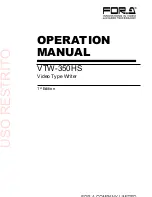
APPEAR AS
Confidential
254/352
Sub Burn-in 2
nd
Language
Specify the 2
nd
Language for Sub Burn in from drop down list.
Priority
Specify the Subtitling Selection Priority.
9.3.9
L
OGO
I
NSERTION
Once there is a valid logo on the MMI (section 0), then it is possible to assign this to a transcoder channel. This is
configured on the Logo tab:
Once the correct logo resolution is chosen for the service and the offset set, the logo can then be enabled.
9.4
S
TATISTICAL
M
ULTIPLEXING
The principle of statistical multiplexing is that a group of video encoders/transcoders (referred to as a StatMux
group) shares a fixed quantity of TS bandwidth. The bandwidth is distributed by a centralized StatMux controller,
and the program with the most complex video may be allowed to use more bandwidth than programs with less
complex video or with a lower priority.
The statistical probability that all programs in a multiplex shall demand a high bit rate at the exact same time
decreases when the size of the multiplex group increases.
The motivation for a Statmux system is to either:
•
Avoid spending bandwidth on simple video sequences in order to free up capacity for new programs in
the multiplex.
•
Distribute available multiplex bandwidth between programs in order to increase overall video quality
(VQ), by minimizing overall quantization (QP)
9.4.1
M
ODULE AND
S
TATMUX
E
NGINE
S
UPPORT
In the Appear system there are two Statistical Mulitplex engines (Normal and Universal) and depending on the
modules installed in the unit, only one of these is activated at a time.
The following encoder/transcoder modules types are supported in the Normal Statmux Engine :
•
EC-100, EC-200 and TC-100
The following encoder/transcoder modules types are supported in the Universal Statmux Engine :
















































